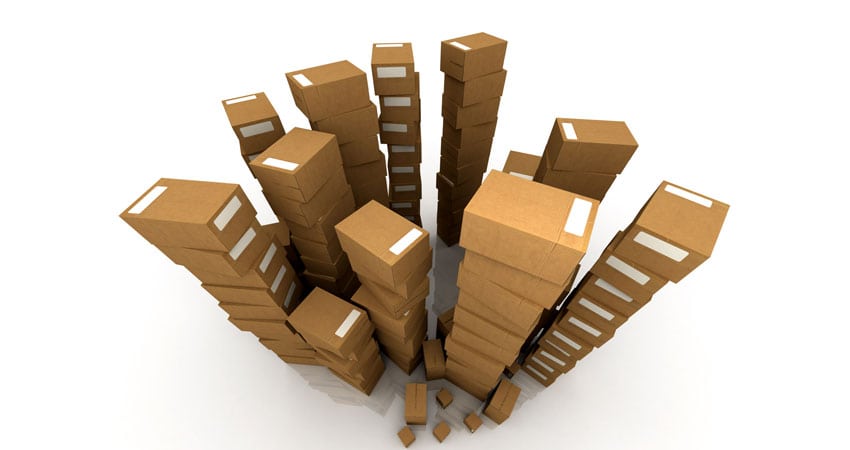Success today is ultimately measured by the customer experience. Can your company ensure a painless, satisfying experience for customers regardless of where and how they interact with your brand?
Providing that quality customer experience is the common goal of businesses navigating their way through the increasingly complex omnichannel world. In the recent past, companies viewed it as a distant goal. However, the ever-growing number of selling channels and competitors, along with customers’ growing expectations, have made it necessary for survival.
So how can you innovate your supply chain for omnichannel fulfillment? The best way to answer that question is through the lens of three critical components: people, processes and technology.
Two distinct approaches to omnichannel supply chain optimization
There are typically two primary starting points for a supply chain optimization project. They are generally based upon where your baseline is today – and your organization’s philosophy regarding change. Let’s call the first one “going on the defense” – it’s defined by these traits:
- Protect the current revenue. The organization pursues multiple channels in an effort to keep its revenue from falling off, rather than as an opportunity to embrace new business opportunities. It’s an attempt to keep even with the competition.
- Preparation is lacking. Failing to invest in the right people is common. Planning is reactive. Instead of innovating their own processes, they simply follow the model of others in hopes that it will work for them, too.
- See technology as savior. New systems are viewed as a cure-all. Leadership has a date in mind for when the software and hardware needs to be up and running, with the expectation that everything will fall into place from there. Little thought is given to the people and processes that will interoperate with the new system.
- Make ill-advised promises to customers. Offering new service-level promises to clients without considering the required people, process and technology changes is a common misstep. You typically only have ONE chance to leave a positive impact on the buyer in the omnichannel world.
The second strategy is a much more sensible one: “going on the offense.” That approach is guided by these best practices:
- Enhance the business through new channels. The organization views new avenues to the customer as a tremendous opportunity for growth. Not only might this mean more revenue immediately, but it puts the business in a great spot for long-term success.
- Build a strategic plan. Sufficient time and resources were set aside to craft a detailed plan. Leadership establishes a rallying vision and all departments in the organization see, understand and support the vision.
- Find the right technology. The company finds technology that will help it meet broader corporate goals. That includes both planning and execution systems with the flexibility to help you clear the hurdles of today and tomorrow. They focus on buying solutions – not systems.
- Find and hire the right people. Professionals that have led similar supply chain overhauls are tremendously valuable during such projects. They are aware of the solutions available and will know how to address the challenges that inevitably come.
Real-world examples of success
Now that we’ve laid out the challenges and best practices, let’s dig into a few brief examples of companies I’ve worked with to resolve typical omnichannel challenges (names are not disclosed).
Retailer A is a department store chain that opened a new eCommerce fulfillment facility with advanced material handling equipment (MHE). However, the warehouse management system (WMS) was configured to follow the legacy (brick-and-mortar) replenishment processes, minimizing the value of the MHE and significantly missing expected throughput goals.
To help rectify the issue, rather than assume that all inbound cartons required value-added services, the WMS was re-configured to determine a product’s distribution center (DC) destination based on whether or not it needed value-added services (i.e., was the vendor/item combination typically received ship-ready?). This simple change immediately improved inbound product flow, decreased the touch time on cartons, relieved conveyor congestion and made inventory instantly available for customer orders. As hoped, throughput improved dramatically.
Retailer B is a large outdoor retailer with a sizable network of brick-and-mortar stores that had seen a spike in online sales. The company’s distribution center was built for retail store replenishment and had no infrastructure nor processes in place to support eCommerce order fulfillment.
In an effort to optimize the DC for both retail store replenishment and eCommerce fulfillment, this company looked upstream in its supply chain and leveraged planning systems to help drive the execution systems. Based on planning forecasts for different channels, the retailer changed inbound processes and began sorting dock receipts based on planned selling channel. This allowed the retailer to direct inventory to easily pickable “eComm” locations in the DC and cross-dock the majority of its replenishment stock directly to stores.
Retailer B also created a dedicated pick line for eCommerce orders, including a pick-and-pass system for multi-line orders, a speed line for single-line orders and an automated parcel manifesting solution to gain throughput.
Before embarking on the journey to optimize your supply chain, you need to evaluate the challenges you face, prioritize them and set attainable expectations. It’s crucial to take a proactive approach, selecting the right people, processes and technology before making any big decisions. And always keep an eye on the future. Omnichannel fulfillment has transformed the supply chain quickly, and another transformational shift could be closer than you think.
Jon Kuerschner is the Vice President of Product Management and Consulting for HighJump

